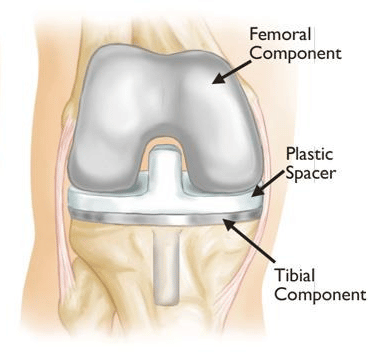Joint Replacement
Home > Joint Replacement
Joint Replacement
Joint replacement, also known as replacement arthroplasty, is a kind of orthopedic surgery in which a prosthetic device is implanted to replace the damaged or diseased joint surface. When less invasive treatments have failed to address significant joint pain or dysfunction, joint replacement may be explored. It’s a kind of arthroplasty that’s commonly necessary for patients with conditions affecting the joints.
Arthritis is the leading cause of knee and hip replacement surgery. To replace a joint is to surgically remove its diseased cartilage and replace it with metal and plastic to restore the full range of motion to the affected limb. A prosthesis is the term for the artificial replacement part. All might be manufactured from plastic, metal, ceramic, or a hybrid. Under general anesthesia, orthopedic doctors perform the surgery.
Knee Replacement
Knee arthroplasty, often known as a knee replacement, is a surgical operation that involves replacing the weight-bearing surfaces of the knee joint to alleviate pain and impairment—both for rheumatoid and psoriatic arthritis and two other knee disorders. Extreme deformity caused by advanced rheumatoid arthritis, trauma, or long-standing osteoarthritis may make surgery more difficult and risky for the patient. Knee discomfort, deformity, or inflammation due to osteoporosis are uncommon and are not indications for knee replacement surgery.
Tears in the meniscus, cartilage damage, and torn ligaments are all familiar sources of crippling pain. Older people are disproportionately affected by the crippling pain of osteoarthritis.

Conducting either a partial or a whole knee replacement during surgery is possible. In most cases, metal and plastic components are used to restore mobility to the affected knee, while the diseased or damaged joint surfaces are removed and replaced surgically.
After surgery, patients often experience significant discomfort and must engage in strenuous physical therapy. Regaining full mobility may take up to 12 weeks after surgery, and the patient may need to utilize assistive devices (such as walking frames, canes, or crutches) during this time. About 82% of complete knee replacements will still function after 25 years.
Hip Replacement
Hip arthroplasty, or hip replacement, is surgery to alleviate hip discomfort. Artificial implants are inserted into the hip joint to replace natural tissue. The hip is a ball-and-socket joint, with the ball located at the head of the femur (thigh bone) (in the pelvis, also known as the hip bone). In hip replacement surgery, the ball or the socket may be replaced. The operation should make it so you can return to work and the gym with less discomfort.
When your quality of life suffers due to hip pain, it may be time for hip replacement. Signs of declining quality of life include:
- Inability to get restful sleep because of pain
- Difficulty doing simple tasks such as getting dressed or climbing stairs
- Inability to fully participate in the activities you enjoy
At first, your doctor may recommend other treatments such as medicine for pain or inflammation, walking aids, joint injections and physical therapy. If these measures do not relieve pain and stiffness, hip replacement surgery may be necessary to restore function and improve quality of life.

Types of Joint Replacements.
The most common types of Joint Replacements are:
- Knee Replacement Surgery:
- Total Knee Replacement
- Robotic Knee Replacement
- Partial Knee Replacement
- Hip Replacement Surgery:
- Robotic Hip Replacement
- Total Hip Replacement
- Partial Hip Replacement
The decision to replace a joint depends on several factors:
- How bad are the symptoms? Moderate to severe pain, stiffness, and limited function of the joint may indicate the need for a new joint.
- How bad is the damage to the joint? An x-ray or other imaging test can show if the bone and cartilage in the joint have deteriorated. The joint may also become misaligned. Moderate to severe joint damage is an indication for joint replacement.
- Does the joint problem limit daily activities and compromise a person’s quality of life? This, too, indicates that joint replacement may be beneficial.
Like any major operation, joint replacement surgery carries the risk of possible complications. For example, there are small risks that you may have a reaction to the anesthesia, develop a blood clot, or contract an infection.
Age by itself does not prevent a person from getting a new joint, but being overweight or having a chronic health condition, such as heart disease, might raise the risks. It’s also possible for the prosthesis to break, making it necessary to do a so-called revision procedure to fix it.
A hospital stay of a day or two is typical for knee or hip joint replacement. Physical therapy then helps the muscles around the new joint to get strong. Joint hardware can last 15 to 20 years or more, depending on the type and the person’s level of physical activity.

